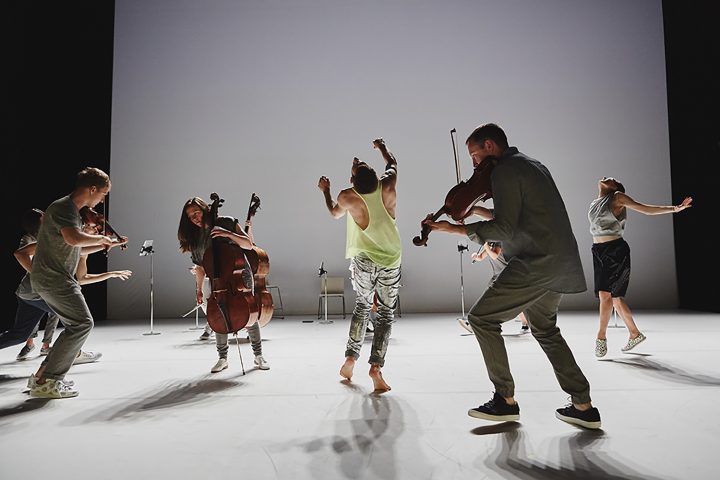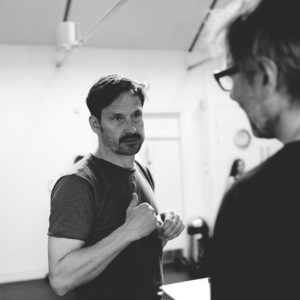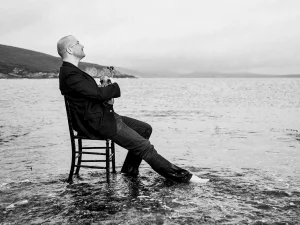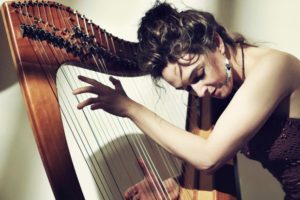
Schleswig-Holstein Musik Festival
We’re excited to have been invited to perform at this German festival, which each year chooses a composer to focus on. This year it’s Bach, and we’ll be presenting some of his music in two very different ways.
On the first two nights, we’ll perform our collaboration with contemporary dance company Andersson Dance – a tender, playful reimagining of Bach’s Goldberg Variations.
For our third night, we’ll be joined by the acclaimed Celtic-inspired duo Chris Stout (fiddle) and Catriona McKay (Scottish harp) for a programme spanning genres and styles.
- Sun 18 August 7:00 pmGermany Kiel Schloss
Goldberg Variations with Andersson Dance
- Mon 19 August 8:00 pmGermany Kiel Schloss
Goldberg Variations with Andersson Dance
- Tue 20 August 7:30 pmGermany Wotersen Manor
with Chris Stout and Catriona McKay
More About the Programme
Play the opening of the Goldberg Variations to someone today, and usually they’ll have heard it – whether in its original form, one of the many transcribed and transposed versions, or in a completely different setting in a totally different genre. It started life as a study for harpsichord; a simple aria, and a set of 30 variations where the aria functions as a hard drive for the whole work.
Goldberg Variations is not only one of the most well-known, and most celebrated, pieces ever written, though – it’s one of the most interpreted. From theories that its structure deliberately mirrors the ascent of the nine spheres of Ptolemaic cosmology, to the claim that the whole thing is a cleverly coded rebuke to a critic who had snubbed the composer, there is clearly something about this sprawling, complex piece which invites interpretation.
In 2015, Örjan Andersson (Andersson Dance) and Jonathan Morton (Scottish Ensemble) came together to add their own, resulting in a collaboration which has since toured across the globe. 11 musicians and 5 dancers perform Goldberg Variations as equal partners – both choreographed, the result is a singular experience of musician and dancer performing as one. It’s here that the subtleties of the interpretation come out; was Goldberg Variations intended to be a purely aural experience, or can we move to it? How do we, and how can we, experience these notes in the 21st century?
For Scottish Ensemble’s third performance at the Schleswig-Holstein Festival, the string orchestra teams up with long-term collaborators Chris Stout (fiddle) and Catriona McKay(Scottish harp) for a programme mixing musical genres, traditions and styles.
Written centuries apart, each piece on the programme is united by an irresistible and inescapably human rhythmic drive, whether in Bach’s heavenly streams of notes, the unrelenting gusto of Bartók’s army of strings, or the rugged, haunting flicks and twists of Sally Beamish’s treacherous ocean in her concerto for fiddle, Scottish harp and string orchestra.
Scottish Ensemble is also thrilled to perform Dealer In Hope, a piece from Chris and Catriona’s latest album. With their roots in Scottish traditional music, the highly acclaimed duo have been exploring and sculpting their musical identity together for around 20 years, merging backgrounds, tradition and a fresh, experimental vision to create something of their own.
Having first worked together on Sally Beamish’s Seavaigers, commissioned and first performed by SE, Chris and Catriona, Scottish Ensemble continues to enjoy a collaborative relationship with the duo, whether performing together on stage, inspiring new compositions, or working together on musical workshops encouraging the practice of playing by ear.


